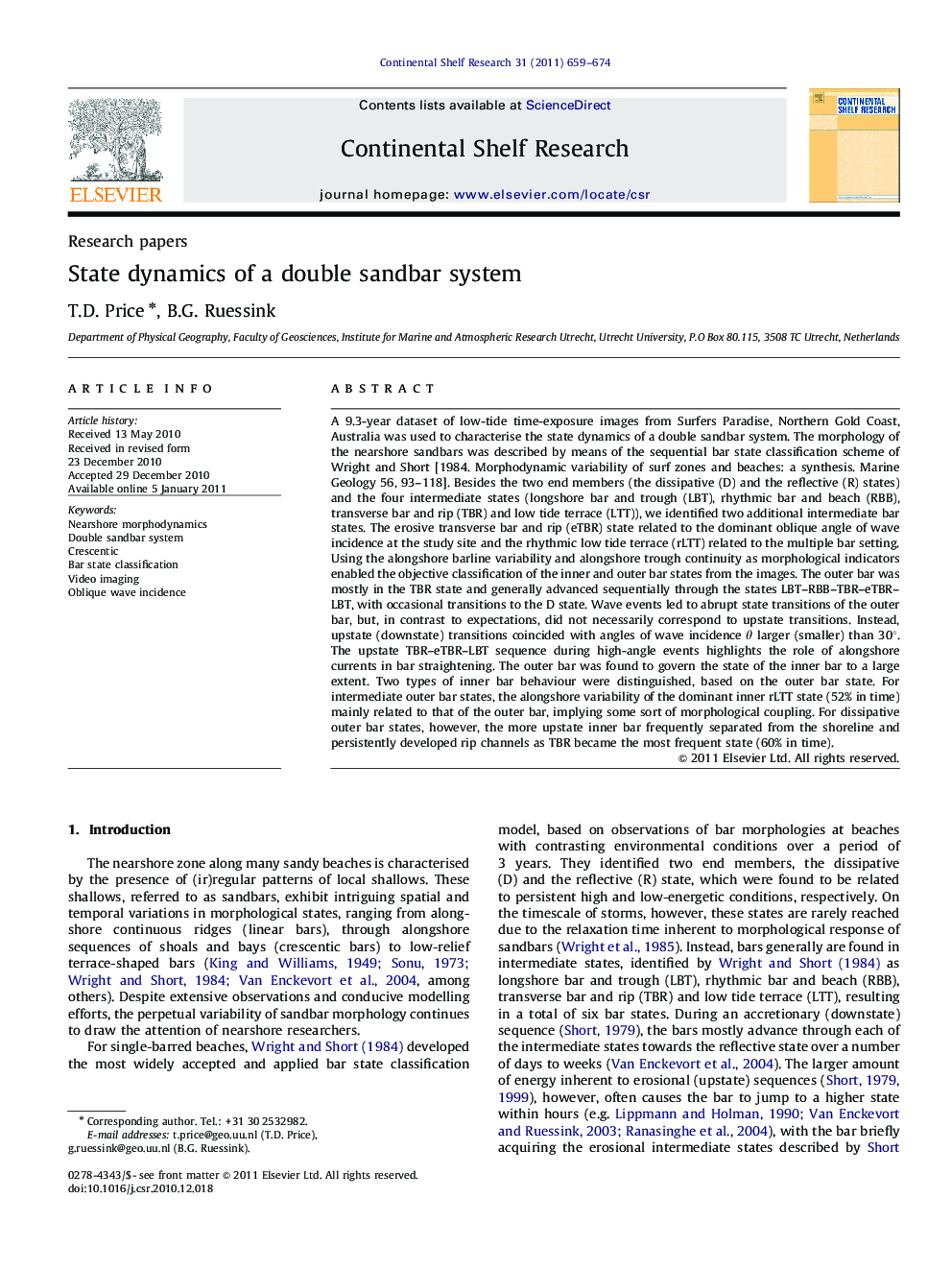| Article ID | Journal | Published Year | Pages | File Type |
|---|---|---|---|---|
| 4532669 | Continental Shelf Research | 2011 | 16 Pages |
A 9.3-year dataset of low-tide time-exposure images from Surfers Paradise, Northern Gold Coast, Australia was used to characterise the state dynamics of a double sandbar system. The morphology of the nearshore sandbars was described by means of the sequential bar state classification scheme of Wright and Short [1984. Morphodynamic variability of surf zones and beaches: a synthesis. Marine Geology 56, 93–118]. Besides the two end members (the dissipative (D) and the reflective (R) states) and the four intermediate states (longshore bar and trough (LBT), rhythmic bar and beach (RBB), transverse bar and rip (TBR) and low tide terrace (LTT)), we identified two additional intermediate bar states. The erosive transverse bar and rip (eTBR) state related to the dominant oblique angle of wave incidence at the study site and the rhythmic low tide terrace (rLTT) related to the multiple bar setting. Using the alongshore barline variability and alongshore trough continuity as morphological indicators enabled the objective classification of the inner and outer bar states from the images. The outer bar was mostly in the TBR state and generally advanced sequentially through the states LBT–RBB–TBR–eTBR–LBT, with occasional transitions to the D state. Wave events led to abrupt state transitions of the outer bar, but, in contrast to expectations, did not necessarily correspond to upstate transitions. Instead, upstate (downstate) transitions coincided with angles of wave incidence θθ larger (smaller) than 30°. The upstate TBR–eTBR–LBT sequence during high-angle events highlights the role of alongshore currents in bar straightening. The outer bar was found to govern the state of the inner bar to a large extent. Two types of inner bar behaviour were distinguished, based on the outer bar state. For intermediate outer bar states, the alongshore variability of the dominant inner rLTT state (52% in time) mainly related to that of the outer bar, implying some sort of morphological coupling. For dissipative outer bar states, however, the more upstate inner bar frequently separated from the shoreline and persistently developed rip channels as TBR became the most frequent state (60% in time).
Research highlights► An objective classification scheme of sandbar states has been developed. ► Angle of wave incidence plays crucial role in sandbar straightening (LBT). ► Inner bar state is strongly controlled by outer bar state.
